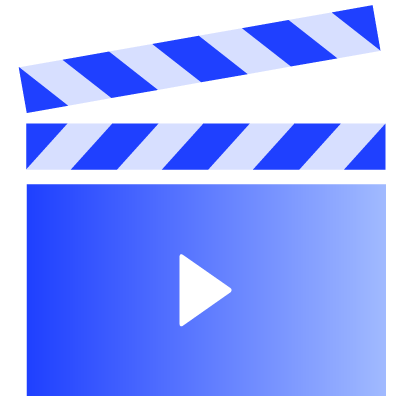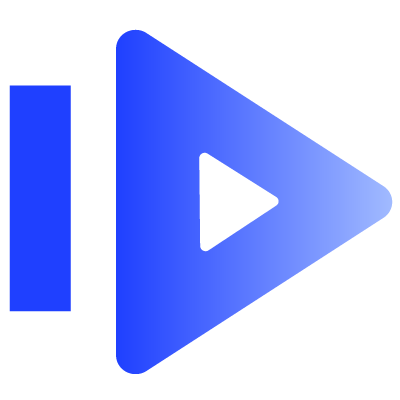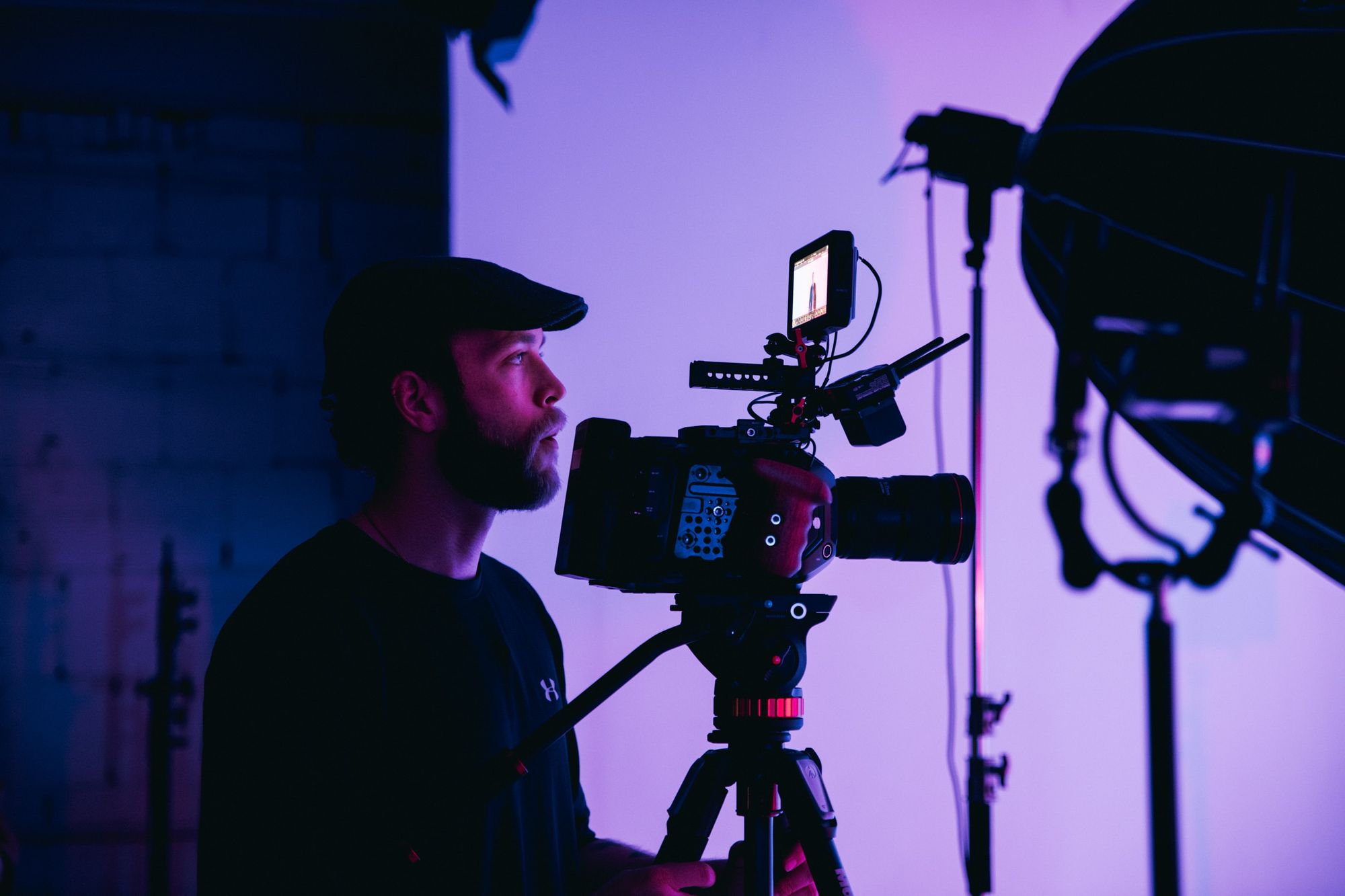Videos are an excellent, interactive way to absorb more information quickly, two attributes that are super important when you think about onboarding customers.
Videos not only excel at welcoming new customers and educating new and existing ones, but they help you secure a higher retention rate and lower churn. It’s a win-win!
But how can CSMs use them to their advantage in the onboarding process? This article will uncover the 25+ smart ways CSMs can help customers reach their “Aha” moment through the use of interactive video content.
Keep in mind that you can pick and choose from our comprehensive list; many suggestions are incompatible with one another, so you should choose the ones best suited for your business and product.
1. Create Short, Feature-specific Videos
The customer setup and onboarding phase can be technical, complicated, and confusing, especially if customers haven’t used the particular type of SaaS, product, or features before. Product video introductions work great, but customers may still have questions about setting up, accessing accounts, or using new software, unfamiliar tools, and features.
This is where creating short, feature-specific videos come in handy.
Feature-specific videos can allow customers to search for and learn about a particular feature that has moved, has a different function, or has new capabilities. They’ll be able to pause, rewind, fast-forward, and visually see how to use the feature to its full potential.
Consider placing a new feature-specific video in the following scenarios:
- Whenever you add a new feature
- When you change an existing feature’s function(s)
- Based on where your customers get stuck during onboarding.
CSMs can even have a series of such videos lined up for customers to access freely.
2. Make Product Explainer Videos
You know that product explainer videos can act as a vehicle to highlight your product’s differentiator, and not only.
Say goodbye to using online user manuals for products or expecting customers to rely on customer service for product-related questions. Instead, you can:
- Demonstrate and explain your product
- Show how it’s different from competitors
- Walk customers through new ways they can interact with and use your product.
These explainer videos work great, especially when you have a SaaS product to show customers the value of the product, not tell, like how Airtable does it.
Additionally, these videos don’t have to be complex, and you don’t have to invest too many resources to produce them; a simple screen recording on a program of your choice with voice-over is sufficient.
You’ll show customers that you have a functioning product that’s simple to learn and allow them to learn at their own pace (they have the freedom to play the video anytime at their own convenience).
3. Implement Product Tour Videos
To further help customers adopt your product, you can create product tour videos. You can implement these videos anywhere in the customer lifecycle, including onboarding signups or when you add new features.
Product tour videos allow you to:
- Guide customers through multi-page tours to highlight what’s new in your product or create an interactive and engaging onboarding for new customers (clicking “done” or “next”, or using video pointers as customers are guided through the tour)
- Re-engage customers by linking product tours in emails or by linking to a product tour inside your product (to direct attention to a particular site element)
- Automatically show tours to a target audience to drive adoption of your product (for example, paid customers visiting a new feature).
You may also include a celebration with an encouragement message or even confetti when completing a product tour to make it more fun.
4. Send Impromptu Videos as Replies to Support Requests
Say one of your customers is stuck on a particular feature, tool, or has missing/ incomplete account information and asks for help. Instead of a back-and-forth email discussion, consider including either a short feature-specific or product explainer video, depending on the support request.
You can easily record this yourself (or have another trusted team member record it) as you’re going through the steps the customer must go through to resolve the issue(s).
This type of video typically is more thoughtful and time-efficient than spending countless minutes trying to convey meaning through text (which doesn’t always go over smoothly).
5. Compile a Video Library with Tutorials
Developing a video library with a series of tutorials is one of the best ways to ensure that customers get all of their questions answered before they feel overwhelmed or stuck on a particular product feature.
Your video library can double as a customer learning center, delivering instant value. Ensure the content is helpful and informative, offering customers simple advice, practical tips, and guidance. This is especially relevant if your SaaS or product is complex.
Depending on your product features or how many products you have, you can create a simple series to cover the most relevant features, or a more complex one where customers can form communities to communicate and interact with one another.
Start with a few core videos that outline your product’s uses and benefits. Have your CSM track how customers use and interact with the videos to provide helpful feedback. Once you have a good idea of what works and doesn’t, you can cover more in-depth topics with videos. And you can also add all the other videos mentioned in this article in the same place. In that way, users won’t ever lose track of a link and will know to go to your video center before they send a message to support.
Uberflip is a great example here. They make this tactic the best it could be with their content experience hub, embedding tutorials, guides, and other videos throughout their content library.
6. Have Videos for Product FAQs
During onboarding, some (frequently asked) questions come up from customers.
Your CSM or customer support team may already have a list of some customers’ frequently asked questions. Creating product FAQ videos will increase brand loyalty, and lower support requests as fewer customers will be reaching out for help (and you won’t overwhelm your customer support team, yay!).
Answer the FAQs you already have in a video format (made in-house or externally), and survey existing customers to grow your list of frequently asked questions. And don’t forget to add subtitles and transcripts to all of your videos, especially to FAQs.
7. Implement Automatic Sending
As you (a CSM) monitor customer health, you can set up automatic notifications from your customer success software to notify you when customers get stuck on a step in the onboarding process. This shows you that you may need to reach out and show customers how to get unstuck.
As your SaaS scales up, you add more features, and you get more customers, you may experience more issues coming up for your customers. To prevent customers from getting stuck on the same step in future onboardings, focus on a tech-touch approach, which helps you find the issues or problems with features that customers experience to then find the right triggers to automate them.
One way to do this is to create Playbooks (sends an email with a tutorial) and implement automatic video sending on the website. By doing so, you can receive notifications if and where customers are stuck, and you’ll know that there is a video (that gets sent automatically) that helps them with their particular issue.
Furthermore, you can reach out afterward to ensure that the video helped them resolve their issue and ask if they have any other questions.
8. Reuse Past Webinars
You may include past webinars directly on your website or as a separate channel to onboard customers. You can send them before a sale so that during onboarding, customers will have the webinars at their disposal if they want to review something relevant for their onboarding process.
Webinars are an amazing way to open up a direct dialogue with customers interested in your product, just not yet “sold” on it. They allow you to collect critical, actionable data and information from your viewers and convert customers. Bonus: they make your customer support team’s jobs way more manageable, as they don’t have to answer so many questions at once.
By reusing past webinars, you can touch on pain points or issues that have previously come up. The current, new, or potential customers may have similar questions or issues that you’ll already have answered or addressed in past webinars. Plus, you won’t have to spend time putting new webinars together since you're reusing them, and your customers can access them whenever they please.
9. Create New Training Webinars
If you don’t want to reuse past webinars (or already have and found them useful), it’s time to create new webinars for training for updated features and information. These can be live, on-demand, or a combination of both.
SaaS companies can also benefit greatly from training webinars by spreading awareness about a solution or product, teaching current customers to optimize software usage, and discussing business models and best practices.
Entire teams may register for the live webinars to learn how to use your product and ask questions. Additionally, customers will see how to use a feature or product in real-time and be able to reproduce the steps.
If your product works across various profiles and industries, you may also choose to segment your training webinars based on customer roles, like how Slack does it. When you click on one of their webinars, you can see what audience they’re best suited for, which is nice.
Remember to include a call to action at some point in your webinar. Experiment with A/B testing and see what works; does it make sense for your CTA to show up at the end or be somewhere in the middle when the audience is more involved?
10. Record Q&A Sessions
If you can answer a question before a customer asks it during onboarding, that customer knows that you invest in their experience. Remember, onboarding is part of a conversation that starts long before customers sign the contract.
To ensure customer success, record any Q&A sessions (especially for your most-asked questions) and have the recordings available on your website for people to access whenever they please.
It’s very important to remember to get consent (preferably written and verbal) from the people in the Q&A sessions.
11. Send Welcome Videos
You know that onboarding is a crucial part of your branding strategy and that first impressions matter. That’s why you must welcome customers modestly, but with a bang. How do you do that? With personalized welcome videos. Adding an element, like their name, can make a huge impact when guiding them through the initial steps of using your product.
Here are some examples we recommend to make welcome videos more personalized:
- Create a welcome video for new customers that features customers and employees already using your product
- Include brief, personalized introductions to new customers on your website or in email communications
- Upload customer-specific welcome videos to social media platforms like YouTube, Facebook, and Instagram
- Make a video for first-time customers introducing them to your company values and culture and explain how those values inform your business practices.
12. Prepare New Features Videos
Whenever you have new features that you add or update, make a video explaining them and show customers how to use them! This is crucial during onboarding, as customers should see what’s new as soon as they’re introduced to the product.
You may even consider doing a sneak-peek type features video, where you tease an upcoming feature or treat it as a feature-to-be-unlocked to “gamify” the onboarding experience and make it more fun. This can help you gather customer interest or feedback (on things like usability, ease of use, and overall look of the feature) prior to implementing the feature.
13. Reuse Pain-point-oriented Marketing Videos
There may be specific features within your product that have caused you and your customers one too many headaches. But you know your customer’s pain points (thanks, Health Scores), and you know that videos are informative, easy-to-digest, and easy to comprehend. So, combine them to increase brand trust, boost conversions, and turn customers into brand advocates.
Pain-point-specific marketing videos are advantageous and effective because they’re available to customers 24/7. By reusing them, particularly during onboarding, you allow customers to find out what friction points typically exist within your product and find answers to their key queries regarding them. Thus, you’re solving potential support issues before they show up - which is one of the overall goals of customer success.
14. Embed a Website Homepage Video
By embedding a highly informative and product-specific video at the top of your homepage, you’ll let users know about the key features of your product before they even become paying customers. In this way, they’ll already have some familiarity with the product features when the onboarding starts.
There are multiple benefits to embedding a video directly on your homepage, and they include:
- A faster load time, and you can choose from multiple services for hosting
- Increased credibility and trust in your brand
- It widens your reach and increases your visibility by naturally giving your website an SEO boost.
Additionally, embedding a video on your website increases site visits and propels customers to take specific buying actions because they simplify product benefits and relay this information in an attractive and exciting way.
15. Make the Demo Video Available
The demo video is where customers can play around with your product and test out some main features. It’s also where they find out how much the product has to offer and why they should start using it.
A demo onboarding video can:
- Show product potential
- Offer the right guidance
- Push the customer forward to the next step in the customer journey.
Make the demo video available to new customers and consider combining it with short feature-specific or product tour videos for a more immersive experience. Ideally, you’ll have a perfect demo recording in your video library, so users can access it any time they like.
16. Send Meet the Team Videos
You can include members of your team in an onboarding video or create individual meet the team videos for each member. In this way, you’ll create a more emotional bond between your team and your customers, and it’ll help put a face to the (product) name.
You can have team members:
- Congratulate customers upon completion of product tour/video/tutorial
- Welcome new customers
- Explain how to use the product, or how and why you changed or added certain features
- Invite customers to take or complete a specific action
- Give out fun tips and tricks.
Get an idea of a “meet the team” video from Abode Creative Cloud.
17. Deliver Video Updates in Emails
You’re using email as one of your onboarding techniques (as you should), and know that emails containing videos perform significantly better than those with plain text. So, include video updates in your upcoming emails. You can deliver video updates every time:
- You updated, removed, or added a product feature
- You changed or updated your privacy policy
- There is an issue with a particular customer’s account (personalized emails).
You may also choose to deliver onboarding videos in your welcome emails whenever a customer signs up for your newsletter or registers on your website. If you don’t wish to include the video directly in the email body, link back to a particular video or your video library where appropriate.
Pro tip: if you include a video in the email body, write the word “video” in the email’s subject line.
18. Push Case Studies with Success Examples
Prospective or new customers can learn what to expect from your SaaS and product with customer success stories and case studies. Use these successful case studies in video format to help you:
- Address challenges your customers may have
- Embrace a customer’s authenticity by sharing their success story with others
- Ease any concerns prospective customers may have.
By using case studies and success stories as videos for your product, you’ll have a higher possibility of converting prospective customers into buying customers further on.
Every good case study and success story video must cover the following points:
- Introduces your customer and gives enough information about what will come next (what are the customer’s values, history, and goals)
- Presents the problem or issue, explains why it’s so bad, and why it must be solved (your customer’s words are more authentic than your own)
- Talks about the solution to your customer’s problem with specifics (feel free to include why your customer chose you over the competition)
- Details all the good things that happened and talks about your customer’s qualitative or quantitative benefits.
19. Try “First Steps” Videos
First step videos list the exact steps customers should take once they’re in the product. They’re the first interactions customers have with your product, and it’s vital they’re interesting and informative for a successful customer onboarding and journey. These first steps can be during the first 30 days or the 14-day trial period, depending on the options for your business.
Videos are, again, extremely valuable at attracting new customers and allowing them the opportunity to learn about your product, improving retention, and not only.
Consider using any of the following types of videos as “first step” videos:
- Welcome video in an email
- Product tour videos
- Product explainer videos.
20. Integrate Contextual Videos
Contextually relevant videos (based on customer profiles) improve engagement and the customer’s overall experience because they help you and your customer understand each other reciprocally. How? By enabling you to create a creative, fully customized, and personalized customer experience.
Use these during onboarding to further personalize customer experiences. Send them in personalized email communications or integrate them in a personalized product explainer video.
You can create targeted contextual videos based on your customer’s situational data, historical browsing data, and personal profile and data (website search data, past purchase history, etc.). These offer insights, help customers make their purchase decision(s), and show that you’re going above and beyond to provide customers with the appropriate data they need to make their decision.
21. Contextual Meme Videos & Gifs
Similar to contextual videos, you can use contextual memes and GIFs in emails or articles to break the ice, be more relatable, and add interest. Consider using short meme videos and GIFs when demonstrating a quick feature or how to complete a short task, or in a simple conversation to appear friendlier, more human, and less stuck-up.
22. Upgrade to Tooltip Videos
Tooltips are a great way to show small tips throughout their onboarding for the newer customers trying to figure out how to use the product. Consider using animated video tooltips that do the following:
- Offer hands-on advice at the right time
- Pop up once customers reach a certain point in the process
- Illustrate how customers should proceed.
23. Conferences & Webinars as Social Proof
Conferences and webinars based around your SaaS and product are beneficial and you can send or embed them during the customer’s onboarding process.
They’re an engaging way to talk about specific pain points your customers may have with your product, help customers feel heard, and broadcast your message in multiple mediums.
Alongside your homepage and customer communications, you may choose to share associated conferences and webinars on YouTube and LinkedIn, which you can then link back to your personal communications.
24. TV Appearances as Social Proof
As with conferences and webinars, TV appearances in video format embedded or sent during a customer’s onboarding process can benefit you.
Positive social media and TV appearances by leaders in your particular industry or someone who your customers are familiar with (influencers with strong persuasion power such as celebrities or experts) increase your credibility and help your SaaS and product look more trustworthy.
Consider including any type of media mentions and videos in your email communications to add a “stamp” of social proof.
25. User Videos as Proof of Usability
You want your product to be many things - easy to use, convenient, practical, unique, something that brings value for your customers, and much more. To do this, you may use user-generated videos, unboxings, and real-life application videos as proof of usability for your customers.
You want to showcase that your SaaS and product benefit your customers’ lives. Ensure that these videos cover topics such as:
- Is the user interface intuitive, and is it easy to start using the product?
- Can customers complete multiple tasks with the product, and how many?
- Does the product add value to your customers’ lives?
- How likely are customers to recommend the product to friends and family?
Seeing Is Believing: What Better Way to See Than With Videos?
Most companies lose up to 75% of new customers within the first week. Don’t be one of those companies! Listen to your customer’s pain points and issues, and focus on building an action-oriented and customer-centric onboarding process. Consider using one of the video integrations we talked about.
You learned how you could have a better onboarding process with 25 different ways to use videos. Videos are, therefore, an invaluable part of your business.
Which one is your favorite? What videos have worked the best for you? I personally like using product tour and product explainer videos the most.
Remember, always A/B test whenever you can to keep improving retention rates, driving loyalty, and offering the best possible customer experience.


 Free Screen Recorder for Chrome
Free Screen Recorder for Chrome








